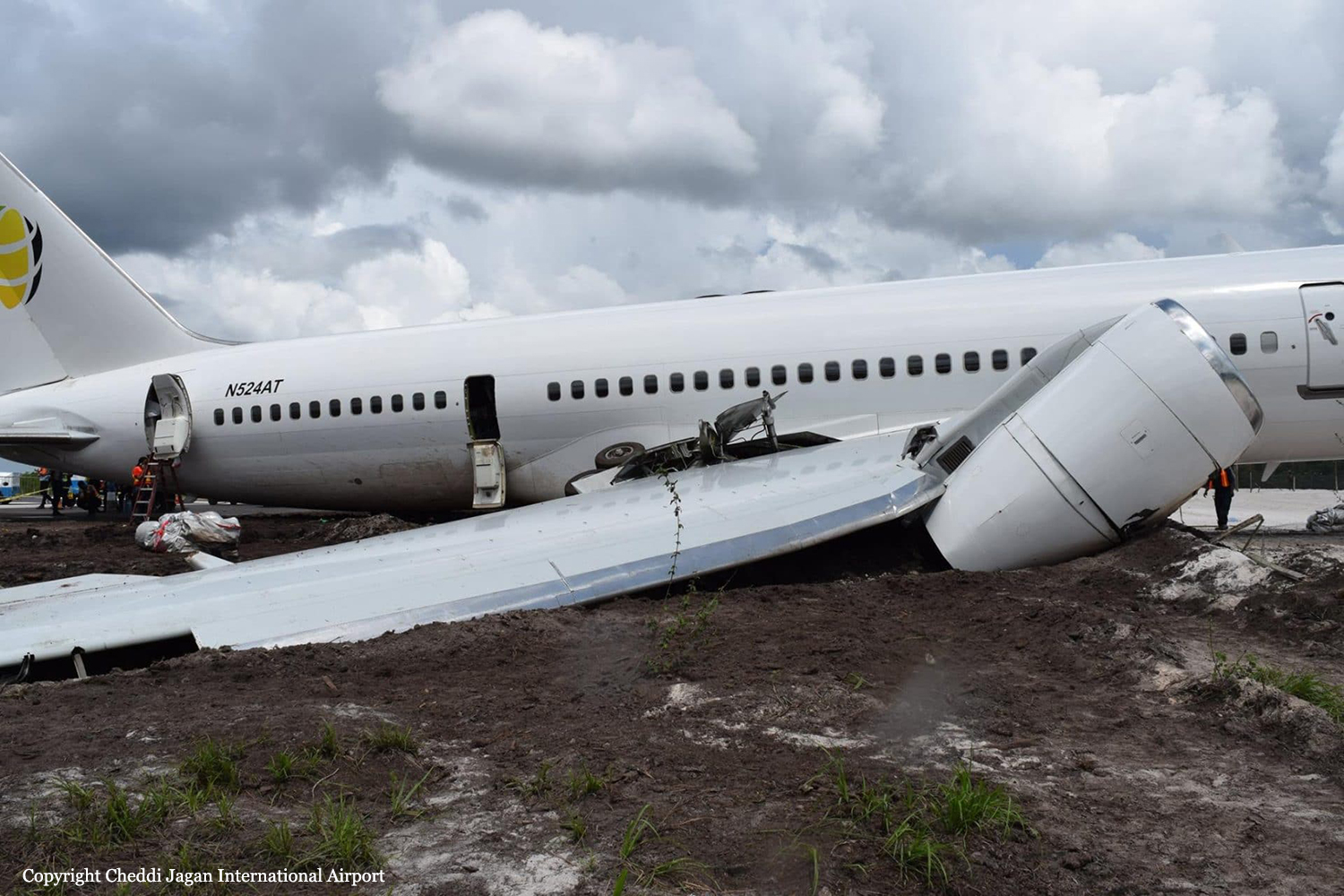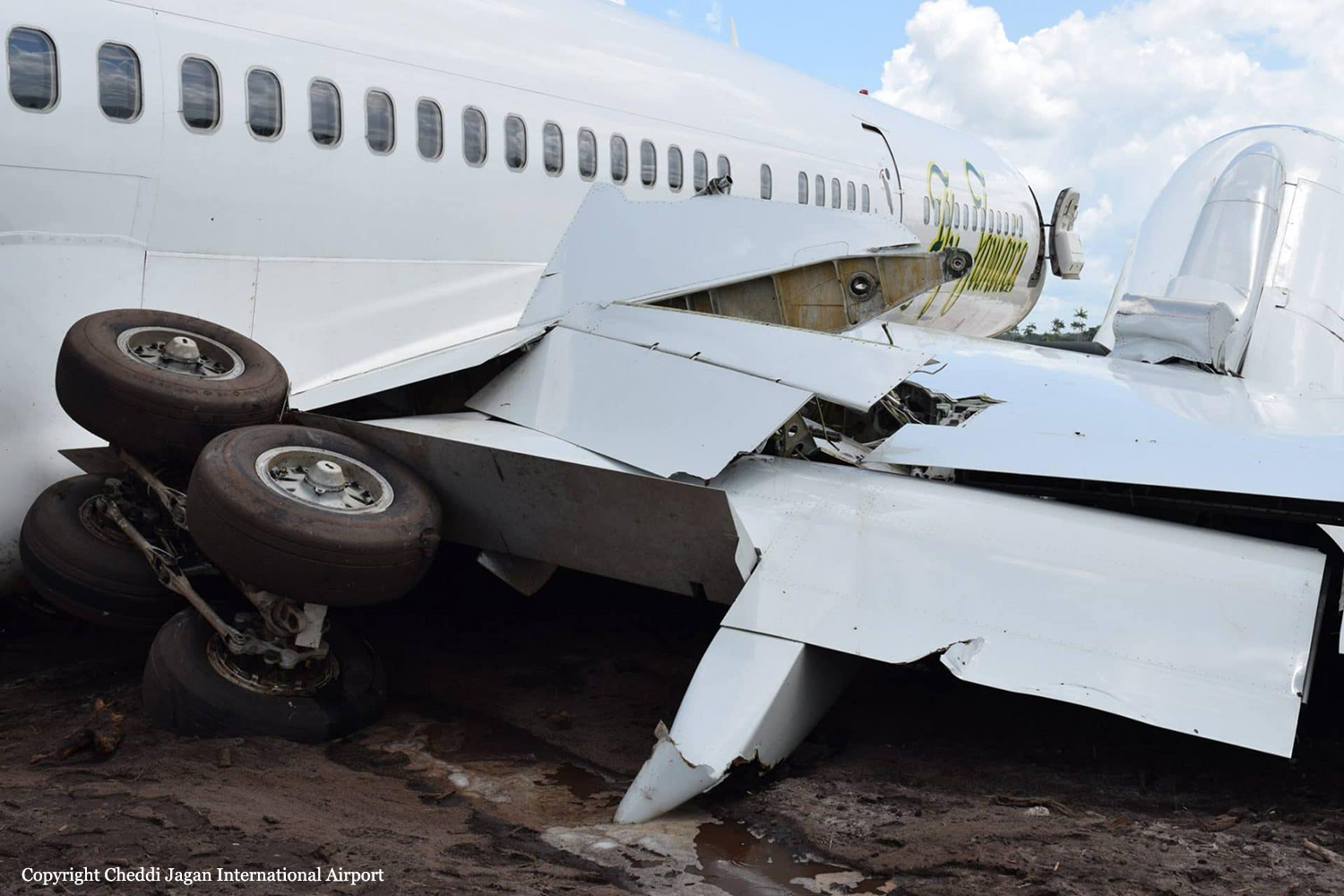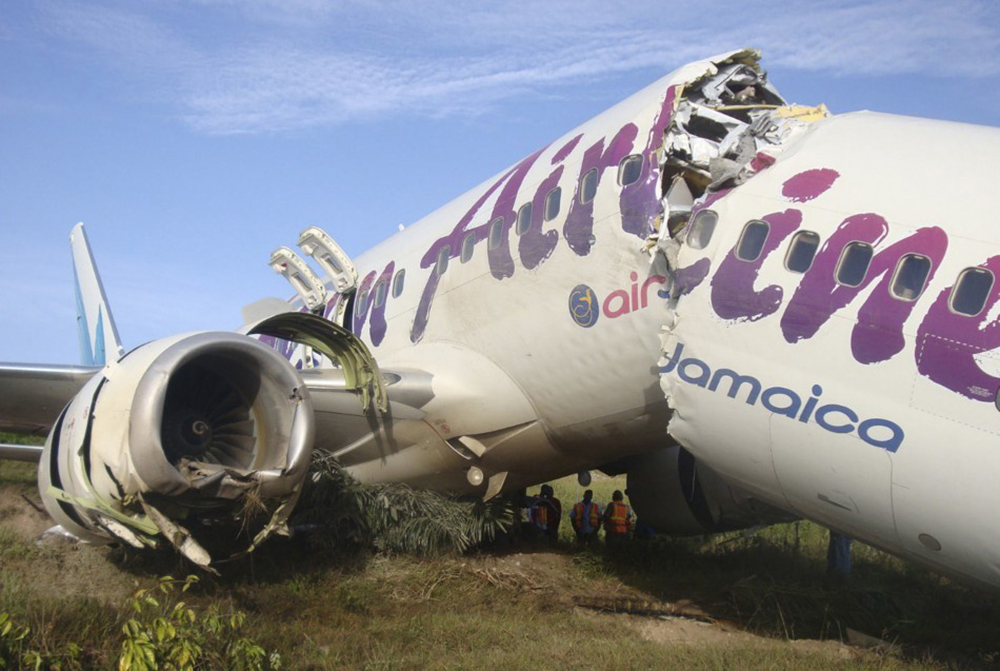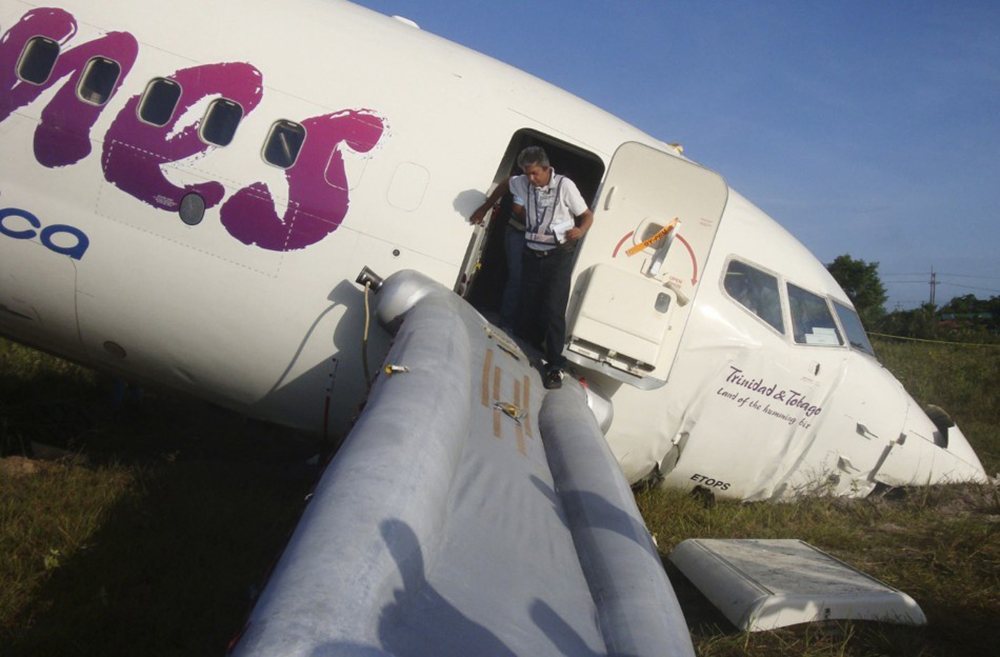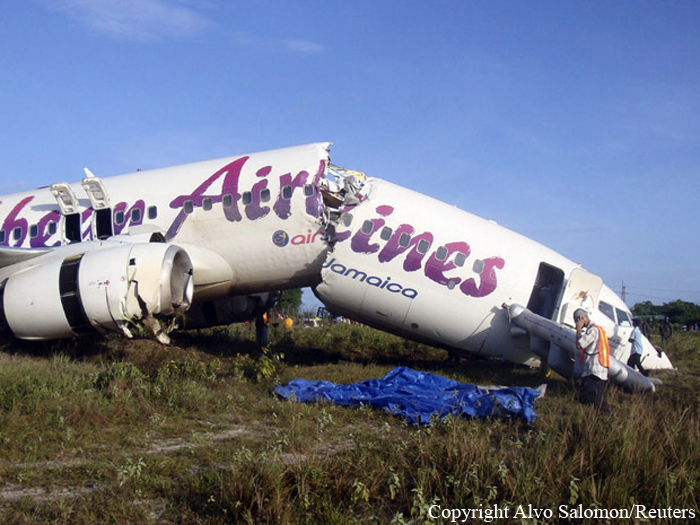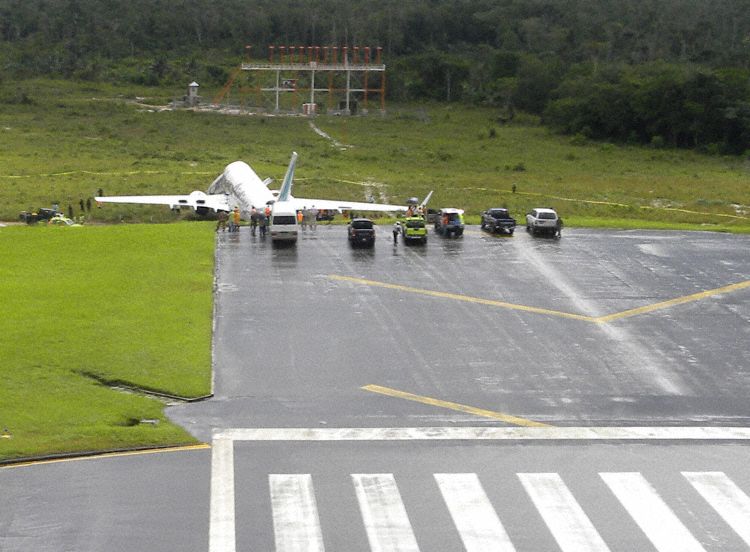Crash of a Boeing 757-23N in Georgetown: 1 killed
Date & Time:
Nov 9, 2018 at 0253 LT
Registration:
N524AT
Survivors:
Yes
Schedule:
Georgetown – Toronto
MSN:
30233/895
YOM:
1999
Flight number:
FJA256
Crew on board:
8
Crew fatalities:
Pax on board:
120
Pax fatalities:
Other fatalities:
Total fatalities:
1
Copilot / Total hours on type:
317
Aircraft flight hours:
43420
Aircraft flight cycles:
13367
Circumstances:
On 9th November 2018, a Boeing B757-200 aircraft, registration N524AT operating as FJA256, departed SYCJ, Timehri, East Bank Demerara, Guyana, at 06:10 hrs with one hundred and twenty passengers, eight Crew Members; and eight hours and one minute of fuel on board. The aircraft was destined for CYYZ, Toronto, Canada. At approximately 06:21 hrs, when the aircraft was 75 nm northwest of SYCJ, at an altitude of 20,000 feet, the Captain reported a loss of hydraulic fluid. He requested Air Traffic Control clearance to stop climb at 20,000 feet and indicated the intention to return to SYCJ for a landing. The Captain's request was approved. He did not declare an emergency. However, after advising the Captain, the Air Traffic Controller on duty activated local emergency stand-by at the airport. The aircraft returned to SYCJ 'Holding Area' where it was configured for landing. The aircraft landed at 06:53 hrs. The final approach and touchdown appeared to be normal. As indicated by the FDR, the aircraft slowed to a speed of 60 kts. Halfway down the runway, the aircraft veered towards the right, departed the runway, and came to a stop approximately 1,400 ft beyond the end of, and perpendicular to, the active runway. The nose of the aircraft was extended over the airport fence and its nose wheel was about 30 ft short of a steep 'drop off.' The aircraft was stopped when its starboard undercarriage became embedded in thick, loose sand that was being used for the ongoing runway expansion project. The Aerodrome Rescue and Fire Fighting Service was on standby and responded immediately. The aircraft sustained major (significant) structural damages. The aircraft was evacuated via the aircraft Slides. There were reports of ten passengers suffering minor injuries and one elderly passenger subsequently died five days after the accident.
Probable cause:
Loss of hydraulic fluid, failure of the pressure switch and subsequent total failure of the hydraulic system (firstly the left and subsequently the right) which affected the deployment of some spoilers, thrust reversers and efficacy of the main brakes caused the aircraft to continue the landing roll at a high-speed resulting in an overrun and excursion and severe damage to the aircraft.
The following contributing factors were identified:
a) Flight Crew lost main brakes after 'pumping the brakes' several times which bled off main brake pressure, and their failure to use accumulator brake that was available at the time to stop the aircraft after losing the main brakes.
b) Setting the flaps to 20o instead of landing flap configuration. This resulted in a higher landing speed and roll and with the combination of loss of main brake pressure due to "pumping" the brakes rather than applying and holding the brakes made it difficult to stop the aircraft on the runway.
c) Maintenance deficiencies and inadequate maintenance actions regarding the hydraulic system. Leaking hydraulic system. FDR readings indicated a trend of hydraulic system difficulties, more so, during the previous 6 flights before the accident. These maintenance lapses may have led to further deterioration and loss of the hydraulic systems.
d) Poor FJA maintenance quality assurance and quality control may have led to the maintenance deficiencies which may have contributed to the ineffective resolution of the hydraulic system leakages and other hydraulic system maintenance issues indicated by the FDR.
e) FJA management's lackadaisical attitude and bypassing recommendations from the Director of Maintenance and Quality Assurance Manager may have led to bad culture, unsafe practices and may have furthered improper maintenance.
(e) Management's interference may have had an adverse effect on maintenance and safety practices generally.
f) The soft mud and loose sand in the overrun area contributed to damage to the aircraft during the excursion.
The following contributing factors were identified:
a) Flight Crew lost main brakes after 'pumping the brakes' several times which bled off main brake pressure, and their failure to use accumulator brake that was available at the time to stop the aircraft after losing the main brakes.
b) Setting the flaps to 20o instead of landing flap configuration. This resulted in a higher landing speed and roll and with the combination of loss of main brake pressure due to "pumping" the brakes rather than applying and holding the brakes made it difficult to stop the aircraft on the runway.
c) Maintenance deficiencies and inadequate maintenance actions regarding the hydraulic system. Leaking hydraulic system. FDR readings indicated a trend of hydraulic system difficulties, more so, during the previous 6 flights before the accident. These maintenance lapses may have led to further deterioration and loss of the hydraulic systems.
d) Poor FJA maintenance quality assurance and quality control may have led to the maintenance deficiencies which may have contributed to the ineffective resolution of the hydraulic system leakages and other hydraulic system maintenance issues indicated by the FDR.
e) FJA management's lackadaisical attitude and bypassing recommendations from the Director of Maintenance and Quality Assurance Manager may have led to bad culture, unsafe practices and may have furthered improper maintenance.
(e) Management's interference may have had an adverse effect on maintenance and safety practices generally.
f) The soft mud and loose sand in the overrun area contributed to damage to the aircraft during the excursion.
Final Report:


